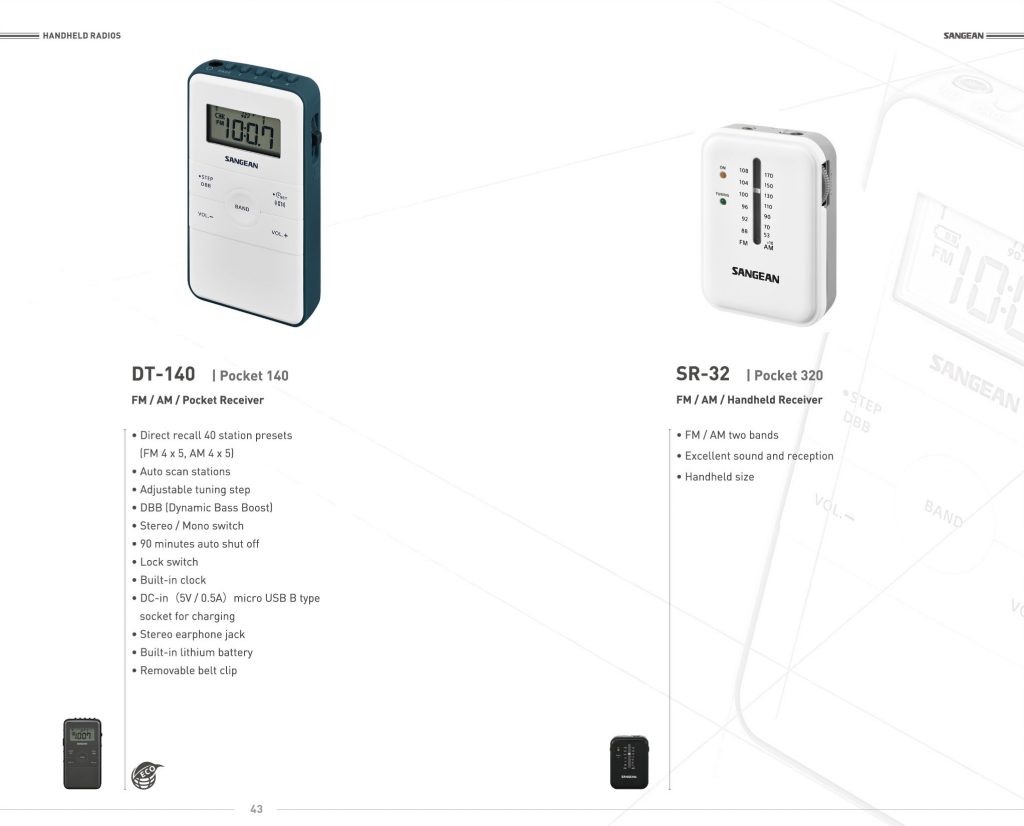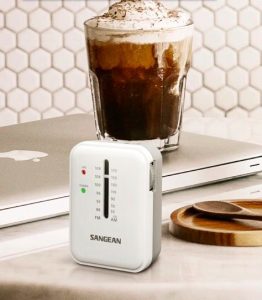
Many thanks to SWLing Post contributor, Michael Schuster, who writes:
Attached image [above] is extracted from a PDF of the 2020 catalog, it shows the
upcoming Sangean DT-140 and SR-32.Wondering if the SR-32 (from the almost-defunct “slide rule” series) uses DSP-as-analog tuning like its larger sibling with speaker.
Thanks for the tip, Mike! Yes, I’d be willing to bet that the SR-32 is DSP-based. I might have to check these out further.
It’s also nice to see that they also feature both the ATS-909x and ATS-405 shortwave portables in the 2020 catalog!


Digital radios of the DAB+/DRM variety display broadcasters’ names only. A scan is required to find them initially. the Info button will generally show the actual frequency.
For reliable digital reception the receiver needs to be exactly on the centre frequency of the channel making analog tuning unviable. This is true to a lesser degree for HD radio which still uses a carrier.
Analog tuning can be simulated by using a Gray coder on the back of the tuning knob and then incrementing or decrementing channel by channel in the Americas’ case in 10 kHz steps. elsewhere 9 kHz steps.
The HD2 – HD4 has to be a separate selection because the supplementary signals need the original tuning to receive all the digital signals regardless of whether it is hybrid AM/digital or digital only.
This is getting a bit OT for this article, but with regard to Sangean and digital displays, I with they would implement some more modern tech for their LCD displays.
Both the DAB+ and HD-Radio (IBOC) sets from Sangean pretty much use the same low-resolution, big-character dot-matrix LCD display design. While this makes the characters easier to read, the display, as a whole, displays very little information. This requires the extensive use of scrolling or display swapping by button, to convey what other manufacturers put on the screen all at once (even with truly micro-sized screens like the Majority Petersfield, for instance). Some of the Sangean DAB+ sets skirt this even further by displaying only the short names of the broadcasters. Try sorting out programs from 4 or 5 channels within the same ensemble whose station names look almost identical.
This is less critical with HD as there are a maximum of 4 programs per frequency; but still, they could do much better. This is almost certainly a R&D/cost business decision in order to save cost sof developing a new display. There are plenty of other DAB+ sets from other manufacturers which obviously use the same chipset, but put much more information at once on the LCD.
There is an error, one the new radios (left) is clearly DT-140 not DT-120.
Got it! Thanks, Peter!
Neither has HD… Bummer. I’m waiting for the first slide ruler tuners that have HD. I haven’t seen that yet. I also hope that the manufacturers abandon having “extra stations” on the dial, but rather have an additional numeric display to show the HD channel with a button to toggle through them.